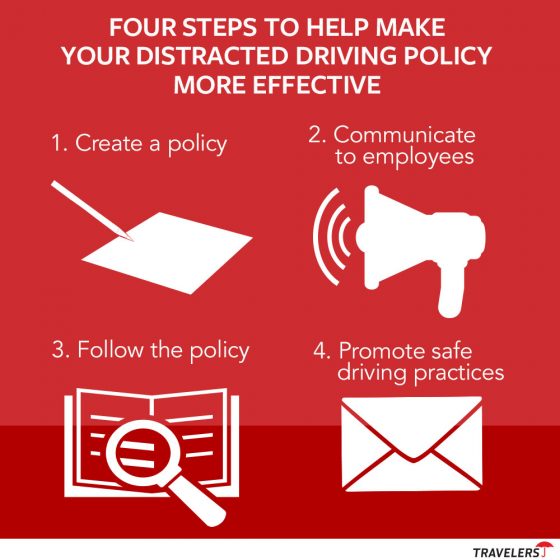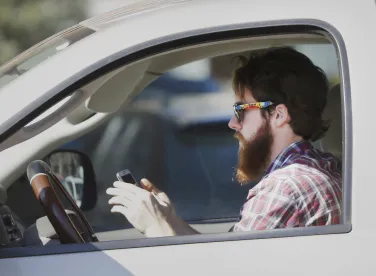It is probably not shocking to learn that distracted driving is fast becoming a huge problem. The introduction of the smartphone, that clever device that allows you to text, email, speak with a friend and, ugh, take a video of yourself hopping out of your car and dancing while it’s in drive, is right at the center of the blame.
For parents, the thought of their newly licensed teenager taking the family sedan out – with their phone in hand – can be frightening. And, it should be. According to the Children’s Hospital of Philadelphia distraction was a key factor in 58% of crashes involving drivers ages 16 to 19.
But, distracted driving is not something that only parents should worry about. “When it comes to preventing distracted driving, people often worry about their teenage drivers — but what about conversations happening at the office or while people are on the job?” said Jordan Solway, Group General Counsel and Vice President of Claim, Travelers Canada.
Travelers’ public policy arm, The Travelers’ Institute, recently commissioned a poll that highlighted the importance for businesses to identify the risks of distracted driving with their employees. The poll found that 37% of Canadian drivers answer or make communications while driving. Of these drivers, 14% cited “wanting to always be available for work.” as a key reason for their distractions behind the wheel. But, always being connected can create risks.
“When you’re involved in a conference call, you’re paying less attention to your surroundings,” Solway said. “Driving is a complex function that requires visual (eyes on the road), physical (hands on the wheel) and cognitive processing. Taking your eyes off the road for just two seconds actually doubles your chances of an accident.”
Countless organizations, public agencies, universities and other businesses employ the use of fleets, while other organizations rely on their employees to drive from location to location in their own vehicles as part of the course and scope of their responsibilities.
“In Ontario, similar to other provinces, it really does not matter if the vehicle is owned by the employee or the organization, if there is an accident caused by distracted driving and the driver was in the course and scope of his or her employment, the organization can be held liable,” Solway said. “This isn’t something just big businesses need to worry about. In fact, the opposite. A distracted driving judgment against a smaller, neighborhood business has the potential to have significant financial consequences.”
The 2012 $21 million jury award against Coca-Cola for a distracted employee who was driving was a wakeup call to all organizations that:
1) companies can be held liable for their employees who operate vehicles while distracted,
and
2) organizations can even be considered negligent if they do not have a distracted driving policy or if their policy is inadequate.
There is a great opportunity for risk professionals to step in and develop policies procedures that address distracted drivers and mitigate the consequences of their actions to their organizations.
“Fundamentally, every business should have a [distracted driving] policy. There should be training on the policy. And, not only should the policy require compliance with the applicable law, but also, it should have clear direction on how and when mobile devices should be used in a vehicle,” Solway said.
Travelers Canada recommends four key steps to making a distracted driving policy more effective:

Training and continuing education are great but it shouldn’t stop there. “The organization has to enforce progressive disciplinary action against those violating the policy,” he said. “They must be warned and dealt to further demonstrate that the organization is serious when it comes to distracted driving.”
Technology will be a key solution to combatting distracted driving. Most new vehicles are equipped with hands-free technology, cellular devices now feature a Do Not Disturb Function and some organizations have installed video recording devices in vehicle cockpits – all great options for promoting safer driving habits.
“In the not so distant future sensors, collision warnings, smarter-cars and autonomous vehicle operating systems could help keep drivers’ eyes on the road, hands on the wheel and minds focused on safe driving,” Solway said.



 />i
/>i

